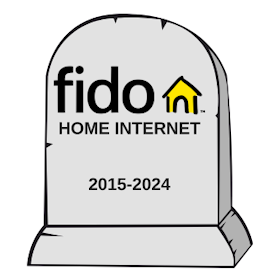Finding a reliable internet provider in Canada is no easy task. Finding one for the country’s rural stretches is even more difficult. Luckily, the rapid expansion of satellite internet has begun to change that equation, with providers like Xplore and Starlink bringing internet to areas previously thought to be permanently off-the-grid.
But which one is better? We sifted through both providers’ fine print to answer that question, focusing on the value plans, coverage, and speed. We’ll break down the differences between Xplore and Starlink, highlighting the important distinctions between these two expanding rural internet providers.
Methodology: How we evaluated Starlink vs. Xplore
-
Plans
We dug through Starlink and Xplore’s plans, distilling the complex information into easily understandable explanations. -
Value
The sticker price is important, but we weighed the tangible perks customers will gain by choosing one provider over the other. -
Practical use
It’s nice to have the best speeds, though the fastest plans aren’t necessarily the best for the average household. We had the typical Canadian household in mind when debating the merits of one provider’s plans over the other.
Plan options

Starlink offers three main connection types for its satellite internet: Residential (for stationary internet), Roam (for mobile internet), and Boat (for high-speed internet at seat). If you’re looking for home internet, you’ll want Residential, which has two different plan options. The Standard option is designed for families, while the Priority option is aimed at businesses with multiple employees. The latter features prioritized data, which can be purchased in chunks of 40GB, 1TB, or 2TB.

Credit: Xplore
Xplore offers far more options, including both satellite internet and fixed wireless. They offer two primary satellite internet plans: the Satellite 250 and Satellite 350, which provide cheaper alternatives to Starlink. Xplore offers additional plans vary depending on your location, so be sure to check your coverage before activating.
Cost
| Service plan | Upfront equipment cost | Monthly price | |
|---|---|---|---|
 |
Standard Priority |
$759 $3,170 |
$140 $185 (40GB) $320 (1TB) $635 (2TB) |
 |
Satellite 250
Satellite 350 |
$99 $99 |
$79 $79 |
Starlink’s Residential plans cost between $140/month and $635/month, depending on the particular package. The most basic Starlink option, the Standard Residential plan, costs $140/month plus the $759 upfront equipment cost. If you opt for a Priority plan, Starlink recommends the Flat High Performance dish for the rather steep price of $3,170.
Xplore’s satellite options are much cheaper, sometimes by hundreds of dollars. A big part of the price difference is due to hardware. Unlike Starlink, Xplore doesn’t require you to purchase any equipment outright; they provide both the satellite dish and router and allow you to use them for free, only charging you $99 upfront for professional installation. If you decide to cancel your plan, you’ll simply return the hardware.
If you’re looking for a cheap option, Xplore is the obvious choice. Starlink’s monthly payment is almost double Xplore’s and the upfront cost for a Starlink dish is a significant investment. Still, it is an investment, one that can be resold if you decide to cancel your plan. But, more importantly, you’re investing in service: Starlink’s plans offer better coverage and faster speeds than other satellite internet providers, Xplore included.
Coverage
Starlink provides service to all of Canada, including the rural areas of the country most ISPs don’t cover. If you want to hit the road, a Starlink Roam plan allows you to take Starlink’s satellite internet service with you. Considering the Starlink coverage map includes all of North America and much of the world, you’d be hard pressed to find a place without a signal.

Credit: Starlink
The Xplore coverage map is smaller compared with Starlink, but it’s still expansive within Canada, with network towers in Alberta, British Columbia, Manitoba, New Brunswick, Nova Scotia, Ontario, and Quebec. Xplore notes that its service is available in every province, though they can’t definitively say whether coverage is available for you unless they confirm your particular address.
Starlink’s wide availability–both in Canada and the rest of North America–makes it the clear winner here. We appreciate Xplore’s emphasis on rural Canada, especially because so many other ISPs have ignored the northern stretches of the country, but Starlink’s massive coverage map can’t be beat. If you go with Starlink, you can count on coverage no matter where you reside.
Speeds
| Plan | Max download | Max upload | |
|---|---|---|---|
 |
Standard Priority |
100Mbps 220Mbps |
10Mbps 25Mbps |
 |
Satellite 250
Satellite 350 |
25Mbps 25Mbps |
1Mbps 1Mbps |
Starlink promises high-speed internet no matter where you live, and their speeds bear that out: the Residential Standard package can reach up to 100Mbps, which is more than enough for a typical household to stream, browse, game, and video-conference with minimal latency (also known as lag). Sure, it’s not as fast as fibre-optic plans from Bell, Rogers, and Telus available in the country’s cities, but most folks don’t need speeds that high.
Starlink’s plans have much faster speeds than Xplore’s satellite plans. Both the Satellite 250 and Satellite 350 plans top out at 25Mbps downloads, a quarter as fast as Starlink. The only difference between the 250 and the 350 plans are in the amount of monthly data. Satellite 250 provides 250GB, while Satellite 350 offers 350GB. That’s another area where Xplore lags behind Starlink: every Starlink plan offers unlimited data, ensuring you won’t have your service paused.
Starlink vs. Xplore: Verdict
If you’re looking for high-quality, high-speed satellite internet, we recommend Starlink. While we appreciate the Xplore affordable internet packages, Starlink’s widespread availability and reliable service make the provider the obvious choice for internet in rural areas and beyond.
Although Starlink’s steep upfront costs might be intimidating, we recommend looking at them as an investment that’ll prevent the frustration and headaches that come with a slow and finnicky internet connection.
Related Articles
Find Better Internet and Phone Plans
Hundreds of internet plans unpacked. All the facts. No surprises.
Internet Providers by Provinces and Territories
- Internet in Alberta
- Internet in British Columbia
- Internet in Manitoba
- Internet in New Brunswick
- Internet in Newfoundland and Labrador
- Internet in Northwest Territories
- Internet in Nova Scotia
- Internet in Nunavut
- Internet in Ontario
- Internet in Prince Edward Island
- Internet in Quebec
- Internet in Saskatchewan
- Internet in Yukon Territory














































